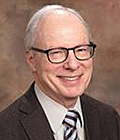Long Hard Days Are Good for Us and Our Patients
Saturday, 1:10-3:10 p.m.
Upper Level 20A

Adrian Gelb, M.B.B.Ch.
Every physician anesthesiologist remembers the long, fatigue-filled and sometimes difficult hours of residency. A growing body of evidence suggests that fatigue is more than feeling tired. Fatigue can be an important factor in patient safety and physician health.
“Too many working hours can make you old quick, can make you incompetent and can make you unhappy,” said Adrian Gelb, M.B.B.Ch., Distinguished Professor of Anesthesia and Perioperative Care at the University of California, San Francisco. “And it may not be so great for your patients and their outcomes, either.”
Dr. Gelb is the lead speaker for the 2015 World Federation of Societies of Anesthesiologists (WFSA) International Panel, “Long Hard Days Are Good for Us and Our Patients,” taking place today from 1:10 to 3:10 p.m. in Upper Level 20A. The facetious title belies very real evidence that working long, stressful hours is a risk factor for patient outcomes as well as for personal health and well-being.
Working long hours is not a challenge unique to anesthesiologists in the United States, Dr. Gelb said. Historically, physicians entered medical school with the expectation of practicing 24 hours a day, seven days a week, for as long as they lived. The realities of medical practice are challenging those traditional expectations.
“Baby Boomers are now into their 60s and realizing that they don’t function very well after 12 hours of high stress in the O.R.,” he explained. “At the other end of the practice spectrum, Millennials are much more focused on a better, healthier work-life balance. At the same time, there has been a substantial growth in patient safety as a real science that can be considered and implemented carefully, especially in anesthesia.”
Speakers will explore the physiology of fatigue, sleep and diurnal rhythms, an area that has seen significant advances in recent years. Resident working schedules in the United States were capped at 80 hours per week in 2003, but some countries have used other approaches to deal with stress, errors and problems associated with extended working hours. In most European countries, for example, almost no one, including physicians, works more than 40 to 45 hours a week, Dr. Gelb noted.
“Some of the subtext to discussion about resident working hours may be the economics,” he said. “How do we get a fixed number of residents working fewer hours to do the same work? The usual response is that the faculty will do the extra work, which doesn’t address the issue from our perspective.”
Economics also plays a role in operating room scheduling. Hospitals and health systems need to maintain some minimum level of O.R. use to meet their own financial obligations. Individual anesthesiologists and other O.R. personnel also need to devote a minimum number of hours to meet their own financial needs.
“The real question is how to schedule O.R.s so you still have a decent income but your life is better,” Dr. Gelb said. “It’s a difficult balancing act for all the O.R. stakeholders — anesthesia, surgery, nursing and administration – but our last speaker is enthusiastic about taking on the challenge. We will be discussing strategies that can be used to manage work-life balance to help you feel better about your job and to enjoy it more.”
Return to Archive Index
